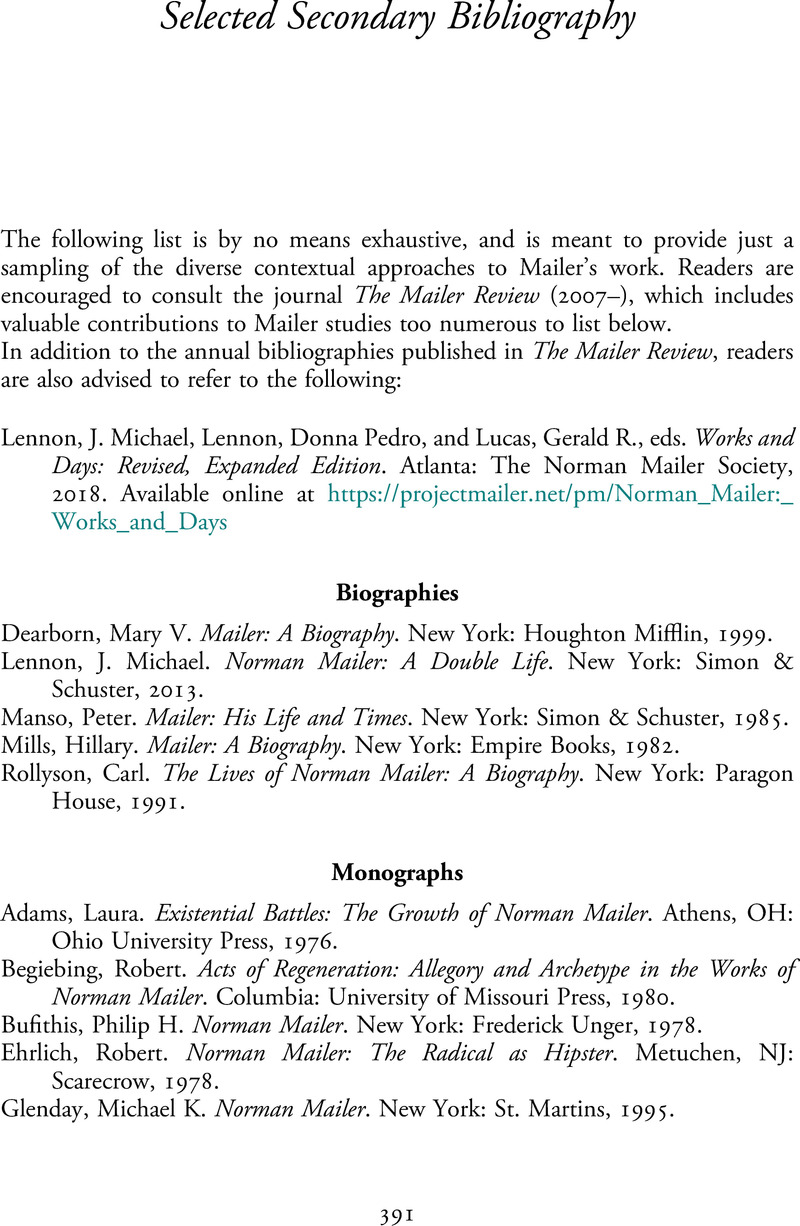Book contents
- Norman Mailer in Context
- Norman Mailer in Context
- Copyright page
- Contents
- Notes on Contributors
- A Note on References and Abbreviations
- Introduction
- Part I Literary Influences
- Part II Form and Genre
- Part III Political Contexts
- Part IV Philosophical and Cultural Contexts
- Part V Gender and Sexuality
- Part VI Profiles and Literary Biographies
- Part VII Mailer’s Legacy
- Primary Bibliography
- Selected Secondary Bibliography
- Index
- References
Selected Secondary Bibliography
Published online by Cambridge University Press: 05 August 2021
- Norman Mailer in Context
- Norman Mailer in Context
- Copyright page
- Contents
- Notes on Contributors
- A Note on References and Abbreviations
- Introduction
- Part I Literary Influences
- Part II Form and Genre
- Part III Political Contexts
- Part IV Philosophical and Cultural Contexts
- Part V Gender and Sexuality
- Part VI Profiles and Literary Biographies
- Part VII Mailer’s Legacy
- Primary Bibliography
- Selected Secondary Bibliography
- Index
- References
Summary

- Type
- Chapter
- Information
- Norman Mailer in Context , pp. 391 - 395Publisher: Cambridge University PressPrint publication year: 2021

